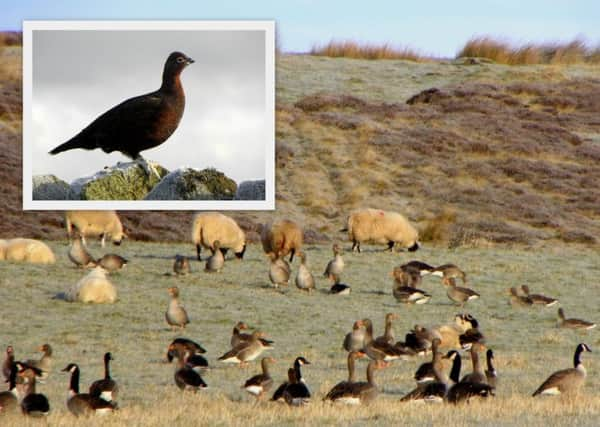Special day spent at the Watch Water Reservoir in remote Lammermuirs


Situated 900 feet above sea level, high in the Lammermuir Hills, is the Watch Water Reservoir.
Opened in 1954, it extends to 120 acres and lies on the course of the Watch Water, which is a tributary of the Dye Water. Retained by an earth embankment dam, the reservoir is operated by Scottish Water for the supply of drinking-water.
Advertisement
Hide AdAdvertisement
Hide AdThe way to reach the loch is by way of a single track road from Longformacus and the temperature was a Baltic -6 degrees as I made my approach. The water is surrounded by heather-clad moorland and thankfully there was no breeze to increase the wind chill factor, as the sun rose above the horizon. There were red grouse everywhere and seemed quite tolerant of vehicles, so I was able to get some decent pictures of them from the car window.
The access road crosses the dam and after parking at the boathouse and walking to the shore, it was obvious what a special place it is. The only sound was the incredible honking and yodelling calls of unseen geese mixed with the “go back go back” calls of the grouse in the surrounding heather.
As I walked further round the northern edge, the source of the honking became apparent.
In a field close to the loch were literally hundreds of geese, grazing along with the sheep. Closer examination with binoculars soon revealed that they were a mixture of Greylag Geese and Canada Geese, the latter being the most vocal. Suddenly, something spooked them and they all took flight and as they did so, they split into two groups – the Greylags settled on the water, while the Canadas returned to the field. There were hundreds in each group and certainly the most Canada Geese I have seen at once in the Borders.
Advertisement
Hide AdAdvertisement
Hide AdAs well as the geese, there was mallard, tufted duck, teal and heron on the water, but no swans.
To cap a special day, on the return trip, close to Rawburn Farm, I stopped to look at a huge flock of finches, feeding on a beech tree and was delighted to spot several bramblings amongst them – my first of the winter.